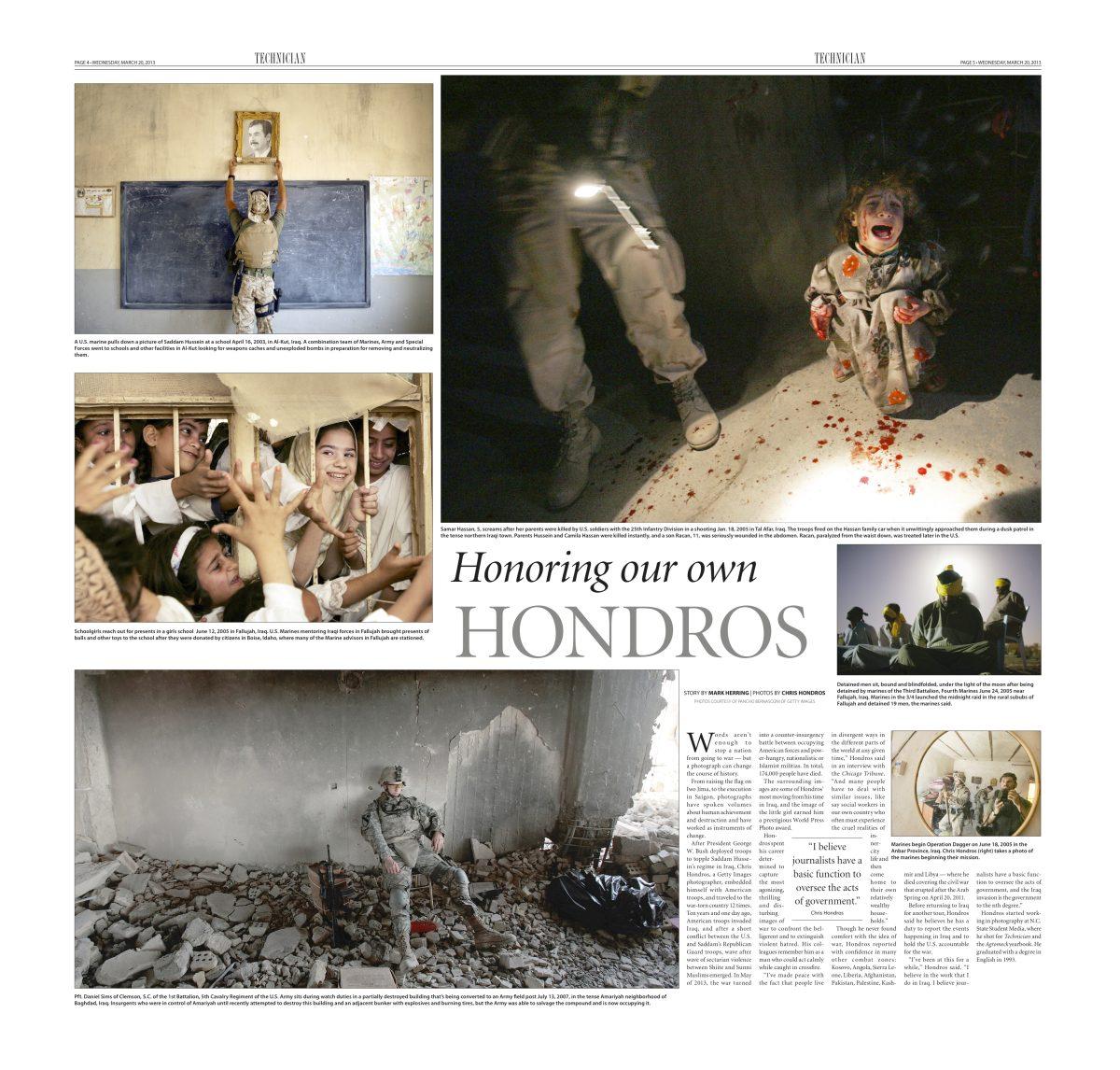Editor’s note: Special thanks to Pancho Bernasconi of Getty Images for contributing these photos to Technician.
Words aren’t enough to stop a nation from going to war — but a photograph can change the course of history.
From raising the flag on Iwo Jima, to the execution in Saigon, photographs have spoken volumes about human achievement and destruction and have worked as instruments of change.
After President George W. Bush deployed troops to topple Saddam Hussein’s regime in Iraq, Chris Hondros, a Getty Images photographer, embedded himself with American troops, and traveled to the war-torn country 12 times. Ten years and one day ago, American troops invaded Iraq, and after a short conflict between the U.S. and Saddam’s Republican Guard troops, wave after wave of sectarian violence between Shiite and Sunni Muslims emerged. In May of 2013, the war turned into a counter-insurgency battle between occupying American forces and power-hungry, nationalistic or Islamist militias. In total, 174,000 people have died.
The surrounding images are some of Hondros’ most moving from his time in Iraq, and the image of the little girl earned him a prestigious World Press Photo award.
Hondros spent his career determined to capture the most agonizing, thrilling and disturbing images of war to confront the belligerent and to extinguish violent hatred. His colleagues remember him as a man who could act calmly while caught in crossfire.
“I’ve made peace with the fact that people live in divergent ways in the different parts of the world at any given time,” Hondros said in an interview with the Chicago Tribune. “And many people have to deal with similar issues, like say social workers in our own country who often must experience the cruel realities of inner-city life and then come home to their own relatively wealthy households.”
Though he never found comfort with the idea of war, Hondros reported with confidence in many other combat zones: Kosovo, Angola, Sierra Leone, Liberia, Afghanistan, Pakistan, Palestine, Kashmir and Libya — where he died covering the civil war that erupted after the Arab Spring on April 20, 2011.
Before returning to Iraq for another tour, Hondros said he believes he has a duty to report the events happening in Iraq and to hold the U.S. accountable for the war.
“I’ve been at this for a while,” Hondros said. “I believe in the work that I do in Iraq. I believe journalists have a basic function to oversee the acts of government, and the Iraq invasion is the government to the nth degree.”
Hondros started working in photography at N.C. State Student Media, where he shot for Technician and the Agromeck yearbook. He graduated with a degree in English in 1993.








